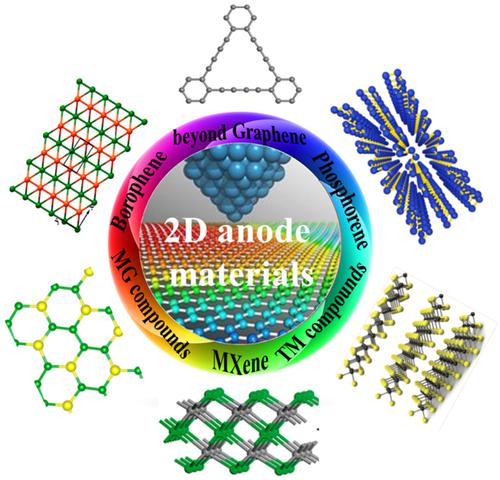当前位置:
X-MOL 学术
›
WIREs Comput. Mol. Sci.
›
论文详情
Our official English website, www.x-mol.net, welcomes your
feedback! (Note: you will need to create a separate account there.)
Computational predictions of two‐dimensional anode materials of metal‐ion batteries
Wiley Interdisciplinary Reviews: Computational Molecular Science ( IF 16.8 ) Pub Date : 2020-03-18 , DOI: 10.1002/wcms.1473 Jianyan Lin 1 , Tong Yu 1 , Fanjunjie Han 1 , Guochun Yang 1
Wiley Interdisciplinary Reviews: Computational Molecular Science ( IF 16.8 ) Pub Date : 2020-03-18 , DOI: 10.1002/wcms.1473 Jianyan Lin 1 , Tong Yu 1 , Fanjunjie Han 1 , Guochun Yang 1
Affiliation

|
The development of quantum‐mechanical approach and unbiased structure search technology plays an important role in accelerating the discovery of new materials. Lithium‐ion batteries (LIBs) are widely used in industrial and agricultural production and daily life. To improve the performance of LIBs and develop new types of batteries, it is necessary and urgent to design electrode materials with superior performance. With respect to bulk materials, two‐dimensional (2D) materials as anodes demonstrate unique advantages. Here, we survey recent progress of 2D anode materials identified or discovered by first‐principles calculations, placing emphasis on main group elements (e.g., carbon, boron, phosphorus), main group binary compounds, transition metal carbides, nitrides, and sulfides. The basic requirements and theoretical descriptors of high‐performance anode materials are outlined. On the other hand, the challenges and opportunities in this field are discussed, which might provide an outlook for the future development.
中文翻译:

金属离子电池二维负极材料的计算预测
量子力学方法和无偏结构搜索技术的发展在加速新材料的发现中起着重要作用。锂离子电池(LIB)广泛用于工业和农业生产以及日常生活中。为了提高锂离子电池的性能并开发新型电池,设计具有优异性能的电极材料是必要和紧迫的。对于散装材料,二维(2D)材料作为阳极具有独特的优势。在这里,我们调查通过第一性原理计算发现或发现的2D阳极材料的最新进展,重点放在主要族元素(例如碳,硼,磷),主要族二元化合物,过渡金属碳化物,氮化物和硫化物上。概述了高性能阳极材料的基本要求和理论描述。另一方面,讨论了该领域的挑战和机遇,这可能为未来的发展提供展望。
更新日期:2020-03-18
中文翻译:

金属离子电池二维负极材料的计算预测
量子力学方法和无偏结构搜索技术的发展在加速新材料的发现中起着重要作用。锂离子电池(LIB)广泛用于工业和农业生产以及日常生活中。为了提高锂离子电池的性能并开发新型电池,设计具有优异性能的电极材料是必要和紧迫的。对于散装材料,二维(2D)材料作为阳极具有独特的优势。在这里,我们调查通过第一性原理计算发现或发现的2D阳极材料的最新进展,重点放在主要族元素(例如碳,硼,磷),主要族二元化合物,过渡金属碳化物,氮化物和硫化物上。概述了高性能阳极材料的基本要求和理论描述。另一方面,讨论了该领域的挑战和机遇,这可能为未来的发展提供展望。









































 京公网安备 11010802027423号
京公网安备 11010802027423号